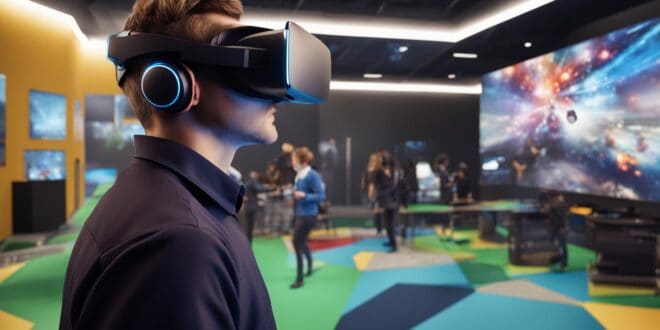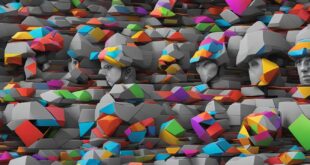Welcome to the world of virtual reality (VR) and augmented reality (AR) in education and training. These groundbreaking technologies are transforming the way we learn, offering immersive and interactive experiences that enhance student engagement and understanding. From virtual classrooms to hands-on simulations, VR and AR are revolutionizing education by bringing learning to life.
Key Takeaways:
- VR and AR in education provide immersive and interactive learning experiences.
- These technologies enhance student engagement, understanding, and knowledge retention.
- VR and AR offer personalized learning experiences and cater to various learning styles.
- They have the potential to improve critical thinking, problem-solving skills, and collaboration.
- VR and AR also enable remote and distance learning, expanding access to education.
The Benefits of VR and AR in Education
Virtual reality (VR) and augmented reality (AR) technologies have revolutionized the field of education, offering numerous benefits to students and educators alike. These immersive technologies provide interactive learning experiences that enhance student engagement, understanding, and knowledge retention. By simulating real-world scenarios, VR and AR allow students to explore and practice in a safe and controlled environment, making learning more memorable and meaningful.
One of the key advantages of VR and AR in education is their ability to cater to various learning styles. These technologies offer personalized learning experiences, allowing students to interact with virtual objects and manipulate complex concepts. This not only enhances their critical thinking and problem-solving skills but also fosters creativity and innovation. VR and AR also enable remote and distance learning, breaking down geographical barriers and expanding access to education.
Another significant benefit of VR and AR in education is their potential to enhance collaboration and teamwork. These technologies allow students to work together in virtual environments, promoting communication and cooperation. Students can engage in group projects, share ideas, and collaborate on problem-solving tasks, preparing them for the collaborative nature of the modern workforce.
Use Cases of VR and AR in Education
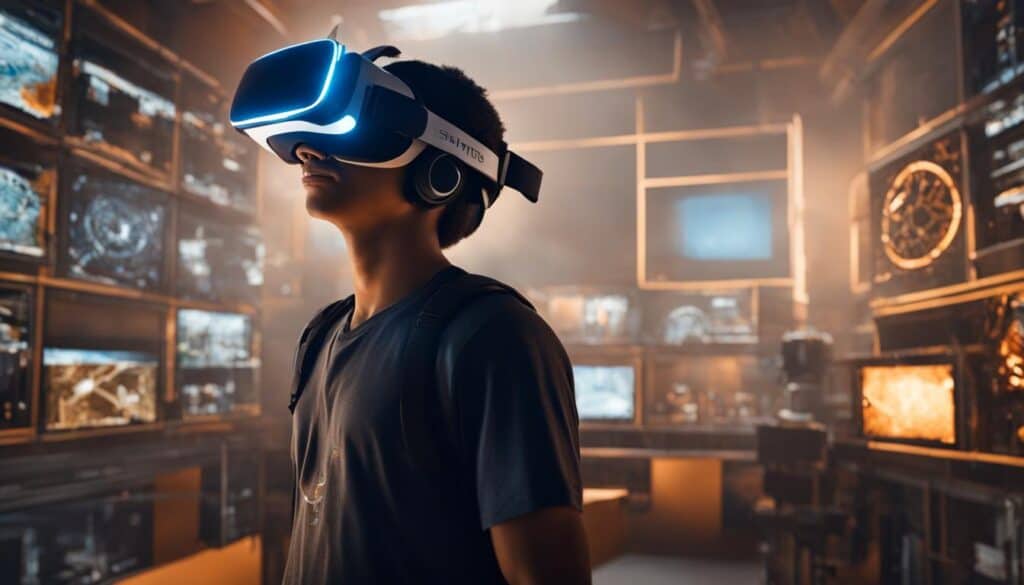
The use of virtual reality (VR) and augmented reality (AR) in education has opened up new possibilities for immersive and interactive learning experiences. These cutting-edge technologies are being implemented in various educational settings, revolutionizing the way students learn and engage with content. Here are some of the key use cases of VR and AR in education:
1. Healthcare Education
In the field of healthcare education, VR and AR are being used to provide realistic simulations of surgical procedures. Students can practice complex surgeries in a virtual environment, allowing them to develop their skills without the risk of harming real patients. These simulations improve surgical techniques, decision-making, and overall competency, preparing students for real-world scenarios.
2. STEM Subjects
VR and AR play a crucial role in enhancing learning outcomes in science, technology, engineering, and mathematics (STEM) subjects. These technologies enable students to interact with three-dimensional models of molecules, planets, and other abstract concepts. By visualizing and manipulating these virtual objects, students can gain a deeper understanding of complex scientific theories and principles.
3. History and Cultural Studies
VR and AR also have significant applications in history and cultural studies. These technologies allow students to explore historical sites, ancient civilizations, and different time periods in an immersive and engaging way. By virtually visiting these places, students can experience the past firsthand, fostering a greater appreciation for history and culture.
4. Vocational Training
In vocational training programs, VR and AR are used to simulate work environments and provide hands-on practice. Students can gain practical experience in fields such as engineering, architecture, and automotive repair through realistic virtual simulations. These simulations help students develop the necessary skills and confidence before entering the workforce.
These are just a few examples of how VR and AR are transforming education. As technology continues to advance, the potential applications of VR and AR in education are limitless. These immersive technologies have the power to revolutionize teaching and learning, providing students with engaging and impactful learning experiences.
Challenges and Considerations in Implementing VR and AR in Education
Implementing virtual reality (VR) and augmented reality (AR) in education comes with its fair share of challenges and considerations. Educators and institutions need to carefully navigate these hurdles to ensure successful integration of these technologies in the learning environment.
Cost
One significant factor to consider is the cost associated with implementing VR and AR in education. Acquiring the necessary hardware and software can be expensive, especially for institutions with limited budgets. The investment in VR headsets, AR devices, and specialized software can be a barrier for many schools and districts.
Technical Expertise and Support
Setting up and maintaining VR and AR systems requires technical expertise. Educators and IT staff need to be trained and equipped with the necessary skills to manage and troubleshoot these technologies. Additionally, ongoing technical support is essential to address any issues or updates that may arise.
Integration with Curriculum and Instructional Methods
Integrating VR and AR into the curriculum requires careful planning and alignment with instructional methods. Educators need to determine how these technologies can enhance learning outcomes and identify the most effective ways to incorporate them into their lessons. The integration should be seamless and purposeful, adding value to the learning experience.
Privacy and Security Concerns
As with any technology, privacy and security concerns need to be addressed when implementing VR and AR in education. These technologies often collect and process personal data, requiring strict adherence to privacy regulations. Institutions must ensure that student data is protected and that the appropriate measures are in place to safeguard against potential security breaches.
Accessibility
Accessibility is another consideration when implementing VR and AR in education. It is important to ensure that these technologies are accessible to all students, including those with disabilities. Educators need to provide alternative options and accommodations to ensure that every student can benefit from these immersive learning experiences.
Overcoming these challenges requires collaboration among educators, administrators, and technology experts. With careful planning, training, and support, VR and AR can be successfully integrated into the educational framework, providing students with immersive and engaging learning experiences.
Impact of VR and AR on Student Learning Outcomes
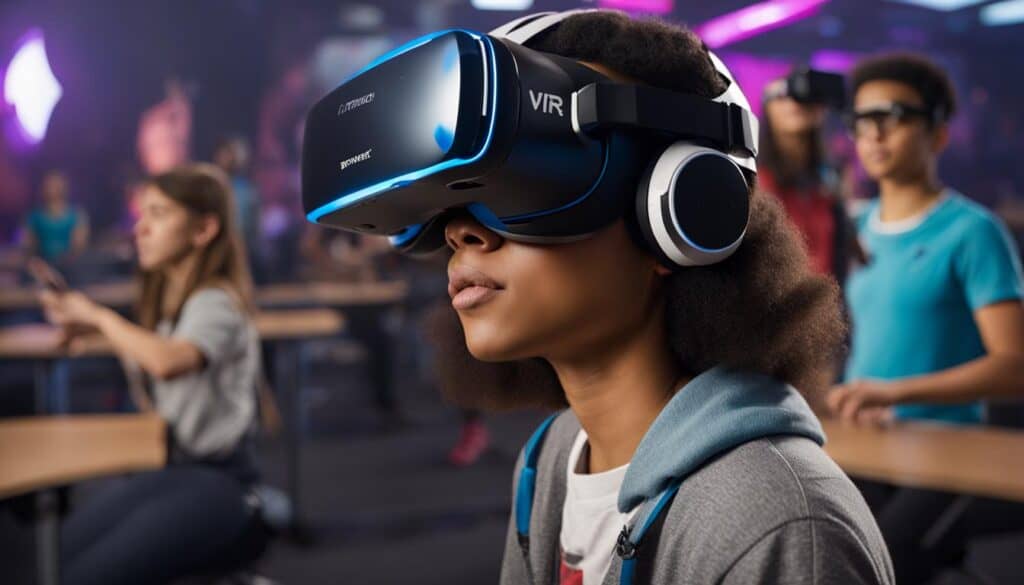
Research studies have demonstrated the positive impact of VR and AR on student learning outcomes in various educational settings. These immersive technologies have been found to improve student motivation, engagement, and knowledge retention. By creating interactive and realistic learning experiences, VR and AR can enhance spatial and visual learning abilities, ultimately leading to a deeper understanding of complex concepts.
One of the key benefits of VR and AR is their ability to promote collaboration and teamwork among students. Through shared virtual environments, students can work together to solve problems and complete tasks, fostering critical thinking and communication skills. Additionally, VR and AR provide opportunities for authentic assessment and feedback, allowing students to demonstrate their understanding in a more interactive and immersive manner.
With VR and AR, students can also personalize their learning experiences. These technologies cater to different learning styles and preferences, allowing students to explore and interact with virtual objects at their own pace. By visualizing abstract concepts and manipulating virtual objects, students can develop their problem-solving and decision-making skills, contributing to their overall academic success.
Key benefits of VR and AR on student learning outcomes:
- Improved student motivation and engagement
- Enhanced knowledge retention and understanding
- Promotion of collaboration and teamwork
- Opportunities for authentic assessment and feedback
- Personalized learning experiences
- Development of problem-solving and decision-making skills
While research indicates the positive effects of VR and AR on student learning outcomes, it is important to note that further investigation is needed to fully comprehend the long-term impact of these technologies. Continued research and evaluation will contribute to a better understanding of how best to integrate VR and AR into educational practices, ultimately improving student success and preparing them for the future.
Resources and Tools for Implementing VR and AR in Education
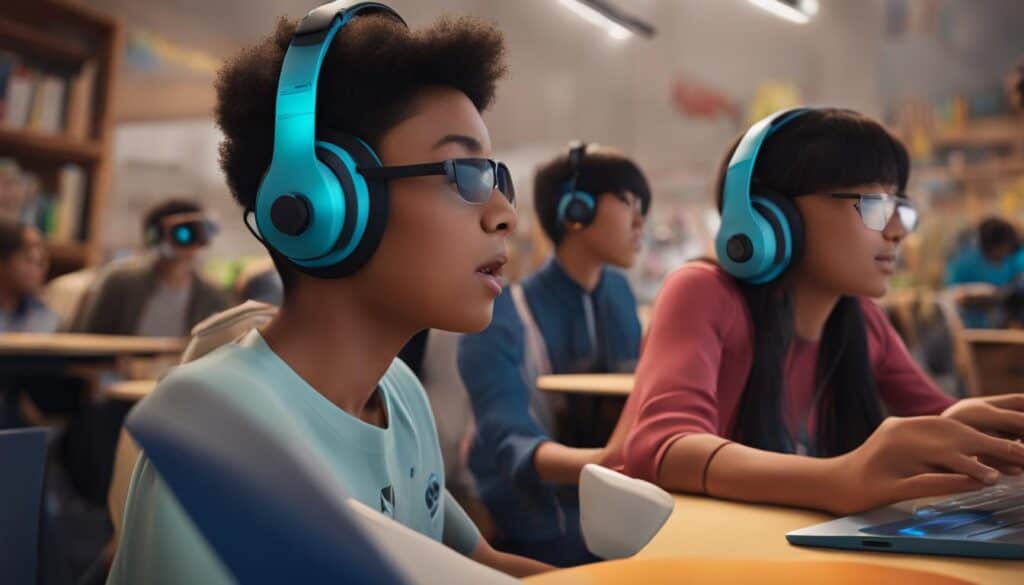
Implementing virtual reality (VR) and augmented reality (AR) in education can offer exciting opportunities for immersive and interactive learning experiences. To help educators integrate these technologies into their classrooms, a wide range of resources and tools are available.
VR and AR Platforms
Several companies provide VR and AR platforms specifically designed for educational purposes. These platforms offer ready-to-use content and lesson plans, making it easier for teachers to incorporate VR and AR into their curriculum. Some platforms also allow for customization, enabling educational institutions to collaborate with developers to create tailored experiences aligned with their specific learning objectives.
Open-Source Resources
In addition to commercial platforms, there are open-source resources available for educators who want to develop their own VR and AR content. These resources often provide access to software and development tools, allowing educators to create engaging experiences tailored to their students’ needs. Online communities and forums dedicated to VR and AR in education can provide valuable support and guidance for educators interested in leveraging these technologies.
Professional Development Opportunities
Many organizations offer professional development opportunities, workshops, and training programs for educators seeking to integrate VR and AR into their teaching practices. These programs can provide hands-on experience with different VR and AR tools, as well as guidance on effective implementation strategies. Professional development can help educators gain the necessary skills and confidence to use VR and AR effectively in the classroom.
By leveraging these resources and tools, educators can unlock the potential of VR and AR in education, enhancing student engagement and understanding. Whether through ready-to-use platforms, open-source development, or professional development initiatives, there are options available to support educators in implementing these exciting technologies.
Future Trends in VR and AR Education
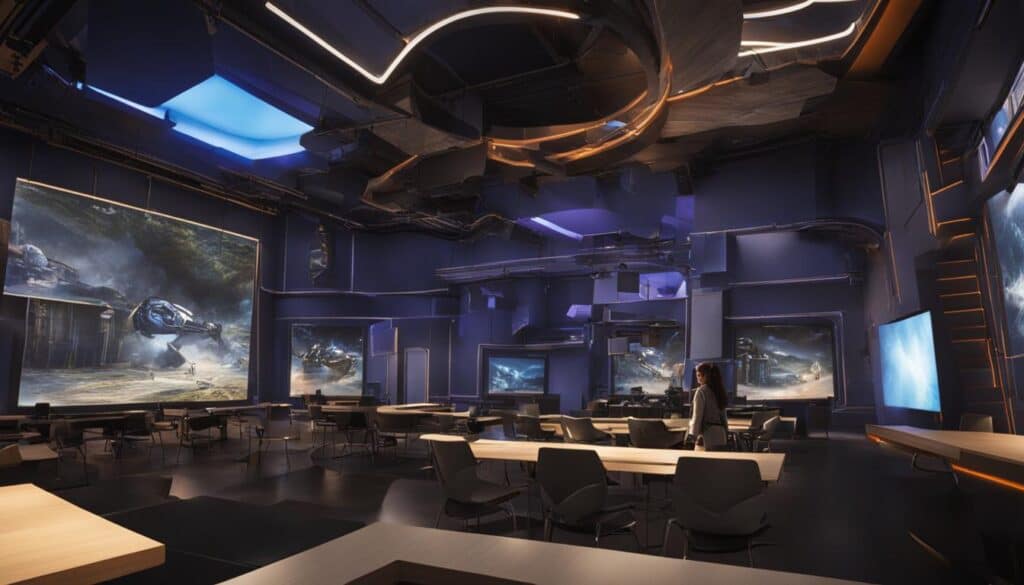
The field of VR and AR education is constantly evolving, and there are several exciting trends on the horizon that will shape the future of this technology in the classroom.
One major trend is the increasing affordability and accessibility of VR and AR hardware and software. As technology continues to advance, the cost of these tools is expected to decrease, making them more accessible to schools and educators. This will enable a wider range of students to experience immersive learning environments and benefit from the enhanced engagement and understanding that VR and AR provide.
Another trend is the integration of artificial intelligence (AI) and machine learning (ML) into VR and AR educational experiences. AI and ML can personalize learning by adapting content and interactions based on each student’s individual needs and preferences. This will further enhance the effectiveness of VR and AR in catering to different learning styles and promoting personalized learning journeys.
Furthermore, ongoing research and development will continue to explore new applications of VR and AR in various educational domains. As educators, policymakers, and industry stakeholders collaborate, we can expect to see innovative uses of this technology in fields such as healthcare, STEM subjects, history, and vocational training. These advancements will open up new possibilities for immersive, hands-on learning experiences that prepare students for the challenges of the future.
The Future Is Bright
As VR and AR continue to advance and become more integrated into educational settings, the potential for transforming teaching and learning is immense. These technologies have the power to revolutionize education by providing students with interactive and personalized learning experiences that were not previously possible.
By embracing the future trends in VR and AR education, educators can enhance student engagement, understanding, and knowledge retention. As the technology becomes more affordable and accessible, and as AI and ML are harnessed to personalize learning, the benefits will reach a wider range of students and make education more inclusive.
The future of VR and AR in education is a promising one, and it is up to educators, policymakers, and industry stakeholders to collaborate and seize the opportunities these technologies present. By doing so, we can create a future where immersive and interactive learning becomes the norm, preparing students for success in the digital age.
Case Studies of Successful Implementation of VR and AR in Education
Implementing virtual reality (VR) and augmented reality (AR) technologies in education has shown immense potential in enhancing student learning outcomes. Here are some case studies that highlight successful implementations of VR and AR in educational settings:
1. Medical School Simulations
A medical school utilized VR to simulate surgical procedures, providing students with a realistic operating room experience. By practicing surgeries in a virtual environment, students were able to enhance their surgical skills, improve hand-eye coordination, and reduce the risk of errors. These simulations also allowed students to learn from mistakes without the consequences associated with real-life surgeries.
2. Interactive Physics Learning
In a physics class, AR was employed to visualize and interact with complex scientific concepts. Students were able to overlay virtual objects onto the real world, enabling them to manipulate and observe physical phenomena in an interactive manner. This immersive learning experience enhanced students’ understanding of abstract concepts, improved engagement, and fostered a deeper interest in physics.
3. Vocational Training Simulations
Vocational training programs have successfully incorporated VR to create realistic workplace simulations. Students can now practice job-specific tasks and scenarios in a virtual environment, preparing them for real-world challenges. These simulations provide hands-on experience, allowing students to develop practical skills, build confidence, and improve their readiness for employment.
These case studies demonstrate the positive impact of VR and AR on student learning and skills development. By providing immersive and interactive experiences, these technologies enhance engagement, improve understanding, and prepare students for real-world applications. As VR and AR continue to evolve and become more accessible, the potential for transforming education grows, paving the way for innovative and effective teaching and learning methodologies.
Conclusion
Virtual reality (VR) and augmented reality (AR) have the potential to revolutionize education and training by providing immersive, interactive, and personalized learning experiences. These technologies have proven to enhance student engagement, understanding, and knowledge retention. By simulating real-world scenarios, VR and AR offer students the opportunity to explore and practice in a safe and controlled environment.
Cost and technical expertise remain challenges in implementing VR and AR in education. However, ongoing advancements in technology will lead to more affordable and accessible hardware and software solutions, driving their widespread adoption in classrooms. It is crucial for educators, policymakers, and industry stakeholders to collaborate and leverage the full potential of VR and AR in improving student learning outcomes and preparing them for the future.
With the ability to cater to various learning styles and offer personalized learning experiences, VR and AR are invaluable tools for educators. These technologies enhance critical thinking and problem-solving skills by allowing students to visualize complex concepts and manipulate virtual objects. Additionally, VR and AR enable remote and distance learning, expanding access to education and bridging geographical barriers.
The future of VR and AR in education looks promising. Integration with artificial intelligence and machine learning will further enhance personalized and adaptive learning experiences. Ongoing research and development will continue to explore the potential applications of VR and AR in various educational domains. As we move forward, it is essential for stakeholders to collaborate and shape the future of VR and AR in education, ultimately benefiting students and preparing them for the challenges and opportunities of the 21st century.
FAQ
What are the benefits of VR and AR in education?
VR and AR provide immersive and interactive learning experiences, enhancing student engagement and understanding. They can simulate real-world scenarios, improve knowledge retention, cater to various learning styles, and offer personalized learning experiences.
How are VR and AR being used in education?
VR and AR are used in various educational settings, such as healthcare education for practicing surgical procedures, STEM subjects for exploring 3D models, history and cultural studies for visiting historical sites, and vocational training for simulating work environments.
What are the challenges in implementing VR and AR in education?
Challenges include cost, technical expertise and support, integration with curriculum and instructional methods, privacy and security concerns, accessibility for students with disabilities, and training for educators.
What is the impact of VR and AR on student learning outcomes?
Research studies have shown positive effects of VR and AR on student motivation, engagement, knowledge retention, spatial and visual learning abilities, collaboration, critical thinking, and problem-solving skills. They also provide opportunities for authentic assessment and feedback.
What resources and tools are available for implementing VR and AR in education?
There are companies offering VR and AR platforms specifically designed for educational purposes, as well as open-source platforms and resources. Educators can collaborate with developers to create customized experiences and access professional development opportunities.
What does the future hold for VR and AR in education?
Advancements in technology will lead to more affordable and accessible hardware and software solutions, integration with artificial intelligence and machine learning, and ongoing research and development to explore the potential applications of VR and AR in education.
Can you provide examples of successful implementations of VR and AR in education?
Yes, examples include medical schools using VR for surgical simulations, physics classes using AR to visualize scientific concepts, and vocational training programs using VR for realistic workplace simulations.
 Online Gaming Circuit
Online Gaming Circuit
